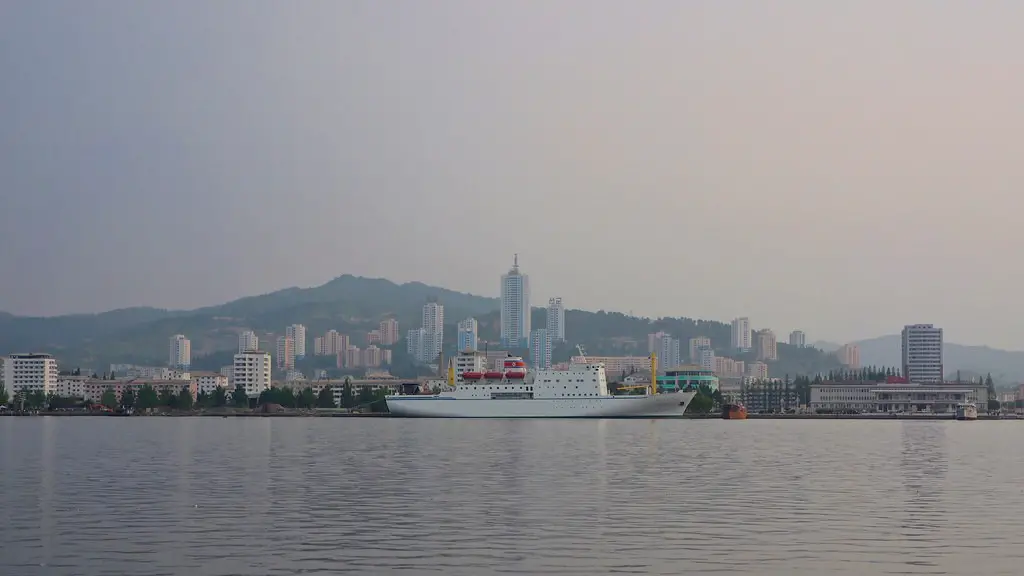Political Differences
North Korea and South Korea were unified until the end of World War II when the Soviet Union and the United States of America began to divide the peninsula into two occupation zones. After the formation of the South Korean government in August 1948, the North Korean government was formed in September of the same year. Both states immediately clashed due to their conflicting political ideologies. While South Korea followed the capitalist model and was democratically led, North Korea adhered to a Marxist-Leninist governance and was led by a one-man dictatorship. This created a strong ideological divide between the two countries that continues to this day.
North Korea wanted to reunify the whole of the peninsula under a Communist government, by merging the two governments and was supported by the Soviet Union. However, South Korea also desired reunification, but under a more democratic government, and was supported by the US. The two states repeatedly clashed over which model would prevail. This disagreement led to numerous skirmishes which eventually escalated into the brutal Korean War (1950–1953). The war ended with South Korea’s independence from North Korea, and the division of the country into two distinct countries that continue to exist today.
Economic Differences
For several decades after the Korean War, North Korea and South Korea had very different economic systems. North Korea set up a closed, centrally planned economy and was heavily reliant on Soviet and Chinese aid. Although it had large reserves of coal, iron and other minerals, these resources were not efficiently used due to a lack of investment and technological know-how. On the other hand, South Korea had opened itself up to the world and transformed into a rapidly-growing economy. It had established a bustling export-driven economy and was able to secure much higher levels of foreign investment compared to its northern counterpart.
In the late 1980s, the two countries had vastly different economic situations. South Korea’s GDP was nearly 25 times larger than North Korea’s, according to World Bank figures. The economic and technological disparity continues to this day. South Korea is now classified as a developed nation, while North Korea remains one of the poorest countries in the world and is heavily dependent on foreign aid.
Social Differences
The division of North and South Korea also caused many social and cultural differences to emerge. The South Korean government prioritized education and information technology, which transformed the country into one of the most literate and digitally advanced nations in the world. In contrast, North Korea stunted its progress by blocking information from the outside world and fostering a cult of personality around its leaders. This has resulted in poor educational opportunities, limited access to the internet and widespread poverty.
Furthermore, North and South Korea have adopted different ideologies regarding religion, as the North follows a state-imposed atheism while the South remains predominantly Christian. These religious differences have caused social divides between the two societies, as South Koreans view their northern counterparts as “godless” while North Koreans view South Koreans as “too religious”.
Military Conflict
The North Korean military has long been a source of tension between the two Koreas. North Korea has the fourth-largest standing armed forces in the world and is one of the most militarized nations on the planet. This large army has been used to threaten its southern neighbour with war and other forms of military aggression over the years. In 2010, North Korea shelled the South Korean island of Yeonpyeong, causing the deaths of four people, and another incident in 2015 when two South Korean soldiers were killed by landmines allegedly planted by North Korea near the border.
In 2017, the South Korean government and the North Korean government signed an agreement to reduce tensions, and since then, the situation has improved. However, the two countries are still technically at war since the Korean War never officially ended. This means that there is still the potential for conflict between the two Koreas, which could potentially lead to full-scale war.
Geopolitical Relations
Since the division of North and South Korea, the two sides have held opposing geopolitical alliances. North Korea is a major ally of China and Russia, while South Korea is a close ally of the United States. This has put the two countries on opposing sides of major political issues, such as sanctions against North Korea and defense policies on the Korean Peninsula. The geopolitical tensions between the two states have increased in recent years due to their differing views on nuclear weapons, missile development and other military matters.
The US and South Korean governments have consistently advocated for the denuclearization of the Korean Peninsula, while North Korean leaders have insisted on developing their nuclear capabilities. As a result, US-North Korea relations have deteriorated, with the US imposing economic sanctions and other restrictions in an effort to force the North to abandon its nuclear program. These tensions have been a major source of conflict between the two Koreas.
Regional Influence
The division of North and South Korea has had a significant impact on the region. Numerous countries, in particular China and Japan, have developed stronger ties with either North or South Korea due to their opposing views on nuclear weapons and other political disagreements. This has created an East Asian bloc of nations that either support North Korea or support South Korea, which has had implications for regional security.
North Korea’s nuclear ambitions have also caused regional tensions to increase, as regional powers have sought to exert their influence in the Korean Peninsula in an effort to prevent nuclear proliferation. This has caused the region to become more militarized in recent years, and has increased the risk of full-scale war between the two Koreas and other regional powers.
International Policy
The international community has generally supported the continuation of the Korean War Armistice and the continuation of peaceful relations between the two Koreas. The United Nations has been involved in many diplomatic initiatives to improve relations between the two countries, including conferences and peace talks. The US and other countries have also supported various initiatives to provide economic aid to North Korea in order to improve relations and reduce the risk of conflict.
Furthermore, the international community has sought to play a role in helping to promote reconciliation between the two countries. This has included inviting North Korean representatives to meetings of the United Nations and other international forums, as well as encouraging North Korea to open its borders and allow greater access to its citizens by Western media and other international organizations.
Economic Integration
Economic integration is one of the main goals of the South Korean government in its efforts to improve relations with North Korea. South Korea recently enacted an economic cooperation plan to invest in North Korea’s infrastructure, with the goal of increasing trade and investment ties between the two countries. The plan includes establishing a transportation network between the two countries, as well as constructing power plants and other energy-generating projects.
South Korea has also sought to boost economic relations with North Korea through the Kumgangsan Special Economic Zone. This is a special economic zone located near the border between the two countries, and was established in 2001 as a means of encouraging economic and cultural exchange. The economic zone has attracted investment from South Korean companies, and has helped to boost economic ties between the two countries.
Political Reunification
The goal of many South and North Korean citizens is to reunite the two Koreas into a single unified nation. There have been numerous proposals for peaceful reunification, with the most recent being the Sunshine Policy. This policy was enacted from 1998 to 2008, and sought to improve relations between the two countries through increased trade, tourism and cultural exchange. This policy led to a period of relative peace between the two countries, which culminated in the historic North-South Summit of 2018.
Despite the progress made in recent years, there are still many obstacles to reunification. The two sides have yet to agree on how a unified Korea would be governed, as well as on how to deal with the demilitarized zone between the two countries. In addition, the North Korean government has been accused of refusing to cooperate with the South on reunification initiatives, and has maintained a hardline stance towards the proposed reunification.




